
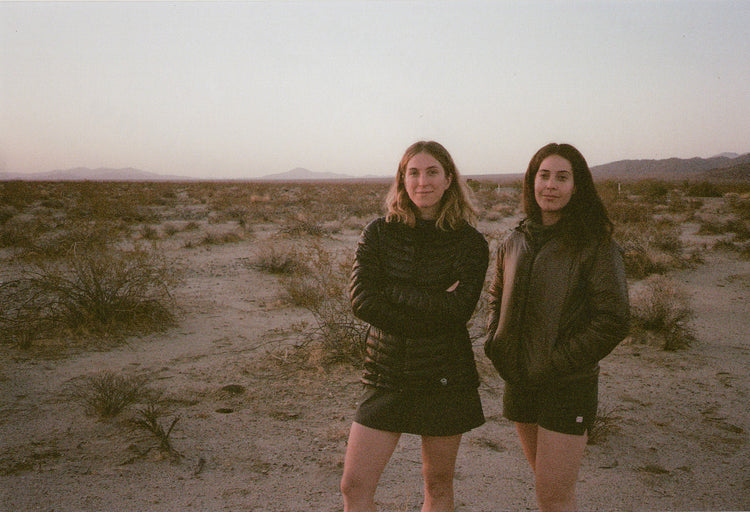
For an industry based on innovation—the outdoor clothing world’s attempts at women’s gear have long been behind the times—sticking firmly to the ‘shrink it and pink it’ ethos with little choice beyond a sea of ill-fitting fuchsia cagoules.
Luckily, things are changing, with a new wave of brands—created by women for women—taking matters into their own hands… like New York’s Hikerkind.
Founded by stylists and backpackers Chelsea Rizzo and Allison Levy back in 2021, Hikerkind make women’s performance outdoor gear that looks nothing like women’s performance outdoor gear—combining the look and feel of classic luxury fashion with functional details only true hikers could think up.
Here’s an interview with ‘em about hiking and clothes and everything else…


From what I’ve read, you both got into hiking through different routes. You started a bit later didn’t you Chelsea? What's your outdoor origin story?
Chelsea: I didn’t grow up taking trips that were particularly outdoorsy—I didn’t really know about these activities until I did a road trip—the classic US road trip in between finishing college and starting my first job as a stylist’s assistant. I took a month travelling around the US, and I camped in a lot of national parks. I’d been to a few of them as a kid, but I’d never really spent time in national parks before, and I’d never hiked—so seeing so many of these national parks in one summer was the first time I realised how many amazing landscapes there were in the US that I could walk in and explore.
So that was one of the first points of interest—but it wasn’t really until I was thinking about leaving the styling industry, but wasn’t sure what to do and where to go—and quite honestly I was pretty broken down as a human—overworked, exhausted and kind of lost as to who I was and what my interests were. I’d spent so much time working for other people and doing things for them, that's when I harked back to those feelings that I’d had on that trip. It was like, “I really liked being outdoors, what can I do outdoors?” So then I started hiking, and then I got obsessed.
What about you Allison? Am I right in saying that was more part of your life growing up?
Allison: Hiking was always part of my life. When my family would travel, it’d be to hike. Any trip we took—from the Canadian Rockies to Iceland—would be focussed around where and how we could get outdoors. So I grew up with it as a constant in my life, but I’d never really explored thru-hiking—I never did long distance backpacking trips until I graduated high school. We took a trip to Israel and for a month we did this hike across the country—just hiking and camping—and that’s when I fell in love with hiking and backpacking.


What kind of clothes would you wear back then? Did you have ‘a hiking outfit’?
Allison: When I was a kid, it was whatever I had in my closet—I’d just hike in jeans. But then as I got older, it was just exercise stuff—like whatever I’d wear for running or yoga. But even when I started educating myself a little more, I’d still just have to wear things that I didn’t really think were cool—they were just my ‘hiking clothes’—clothes that I never felt myself in.
Chelsea: That’s how we really bonded. We knew each other from the styling industry and we’d worked together before—but it wasn’t until Allison was planning a trip to Italy, and I’d just gotten back from thru-hiking the Colorado Trail—and she texted me asking where to get a waterproof jacket and a base layer—and I’m pretty sure I just said, “Good luck!” It was all kind of disappointing, and you just had to take what you could get, because there weren't a lot of options.
Allison: There are those super-esoteric, niche brands that are amazing, but they’re mainly made for men—or there are the staple brands that are stocked at these big outdoor retailers, that aren’t necessarily anywhere near the aesthetic alignment with your wardrobe and what you want to be wearing. It was always just, “Well, this is what I’ve got—I guess I’ll just change after the hike is done.”
Chelsea: I was wearing menswear which I’d then tailor—making the shorts shorter and making the waists smaller. It was easier to feel like myself in menswear than it was in womenswear.
Allison: And I was just avoiding cameras! Like, “This is not an encapsulation of me and my aesthetic—this is just what I’m wearing on a hike.” I was having such a great time, but I was wearing running shorts and a pink t-shirt, and I didn’t feel like I could be fully present.
And then if you don’t feel comfortable—it changes how your day pans out—you’ll maybe not want to go and get food after the hike if you hate the clothes you’re wearing.
Allison: Yeah—I’d either bring something extra to wear, or kind of separate those two worlds and live two lives.
Chelsea: I was trying to make outdoorsy friends—which was very hard to do in New York. I was already uncomfortable because I was new to the activity and trying to meet new people, but then I realised… why do I have to feel uncomfortable with what I’m wearing? It’s so silly—that’s something I can control.
Allison: I always put effort into what I was wearing because it was something I took pride in and a way I expressed myself, so the fact that I wasn’t able to do that in an activity that I loved to do so much meant that I couldn’t feel confident. I knew I was good at hiking and I felt strong in the outdoors, but I never felt I was in the in-crowd because I was wearing my running clothes.
I suppose it’s not even being superficial—but if you’re super into details and you know what you like, then it’s frustrating to have to kind of forgo that. Like if I prided myself on tuning up old cars or something—and that was my thing—then I’d be kind of gutted driving around in some average modern car.
Allison: 100% That’s a great example. Like if you were really into building vintage cars, but you’re stuck driving your mum’s mini-van.
It’s sort of a luxurious problem to have—but I get it. Was that the crux of starting Hikerkind?
Allison: Obviously, like you said, it can feel like such a superficial first world problem, but your confidence is so tied to your mental health. We were talking about how we didn’t feel represented, because no one was talking to us, and so we were like, “Wait, why do we feel like we’re not allowed in this world, or that we have to look like X to be taken seriously?”
Chelsea: That was a big one for me in particular. I wanted to look like myself, but how I envisioned myself hiking on trail wasn’t the image I was being fed, so I had this kind of outsider feeling. And we thought there had to be more women who didn’t see themselves in the apparel that was around.
The Midlayer was the first piece wasn’t it? What was the story behind that?
Allison: We knew we wanted to start with a mid-layer as that was a piece that was kind of synonymous with the outdoors, but we felt it could use a new perspective. So we used it as a way to test whether it was something we could do, and it was something that the community wanted.
Chelsea: It was really difficult to find a fabric, to find a pattern maker and to work out the fit—but then we found this incredible Polartec Power Air material. It’s a fleece material from the mill that created the fleece material back in the 70s, so for us it was the perfect solution, because it was an ingredient brand that outdoor shops and people could recognise, but then it’s this innovative modern material.
Quite often when a fashion brand ‘does the outdoors’, they just take a classic fleece and make an inferior version of it that probably isn’t up to task—but you lot have gone the other way, making a true performance piece that looks like 70s luxury. It’s not obviously ‘outdoorsy’.
Allison: That’s one of the reasons why we wanted to do Hikerkind. We’ve seen a lot of fashion brands build a foray into the outdoors, and whilst all of those pieces are beautiful, you couldn’t wear them on a hike. So yeah, we’re doing the exact opposite. We’re taking all of the technical features we’d want in a performance piece, and adding our perspective.
Chelsea: When we create gear, the first thing we think about is whether a thru-hiker will be able to use it. And at the same time, will the girls in our Hike Club want to wear it? And if we’ve checked both boxes, then we push it forward and go from there.
What sort of things were you looking at for inspiration? It doesn’t look like you’ve gone to the usual touch points people instantly look to with the outdoors?
Allison: The first inspiration we had was this French woman from the 1940s—Annemarie Schwarzenbach. Anne Marie was a travel writer and journalist who was super androgynous in her look, so she sort of became our muse.
And then we were also influenced by luxury fashion like Jil Sander and old Margiela—these really simple, pared back aesthetic that’s timeless. We wanted to be inspired by that era, but modernise it without making it feel ‘trendy’—we’re just trying to create clothing that can be beautiful and fit a lot of different bodies.
Chelsea: Someone said once, “What are you doing, are you trying to be the Margaret Howell of the outdoors?” We were like “Yes!” That’s exactly it!
And that Midlayer is one of those things that can be worn everywhere.
Chelsea: We did this hike with our club around Beacon—a town upstate on the Hudson, and after the hike we got a group pass for the whole club to go to the Dia Beacon, which is a beautiful museum. And to me, that’s exactly the kind of experience I want women to feel comfortable having when they explore—going on a hike, doing something outside, having everything they need, but then looking like themselves and feeling comfortable going into a museum.
We’re always thinking, “Does this provide value to women?” So I’m so happy women are coming to us and they see value. It’s not just a pair of hiking pants that gets stashed in the workout drawer—it’s something that they want to wear, everyday, everywhere.
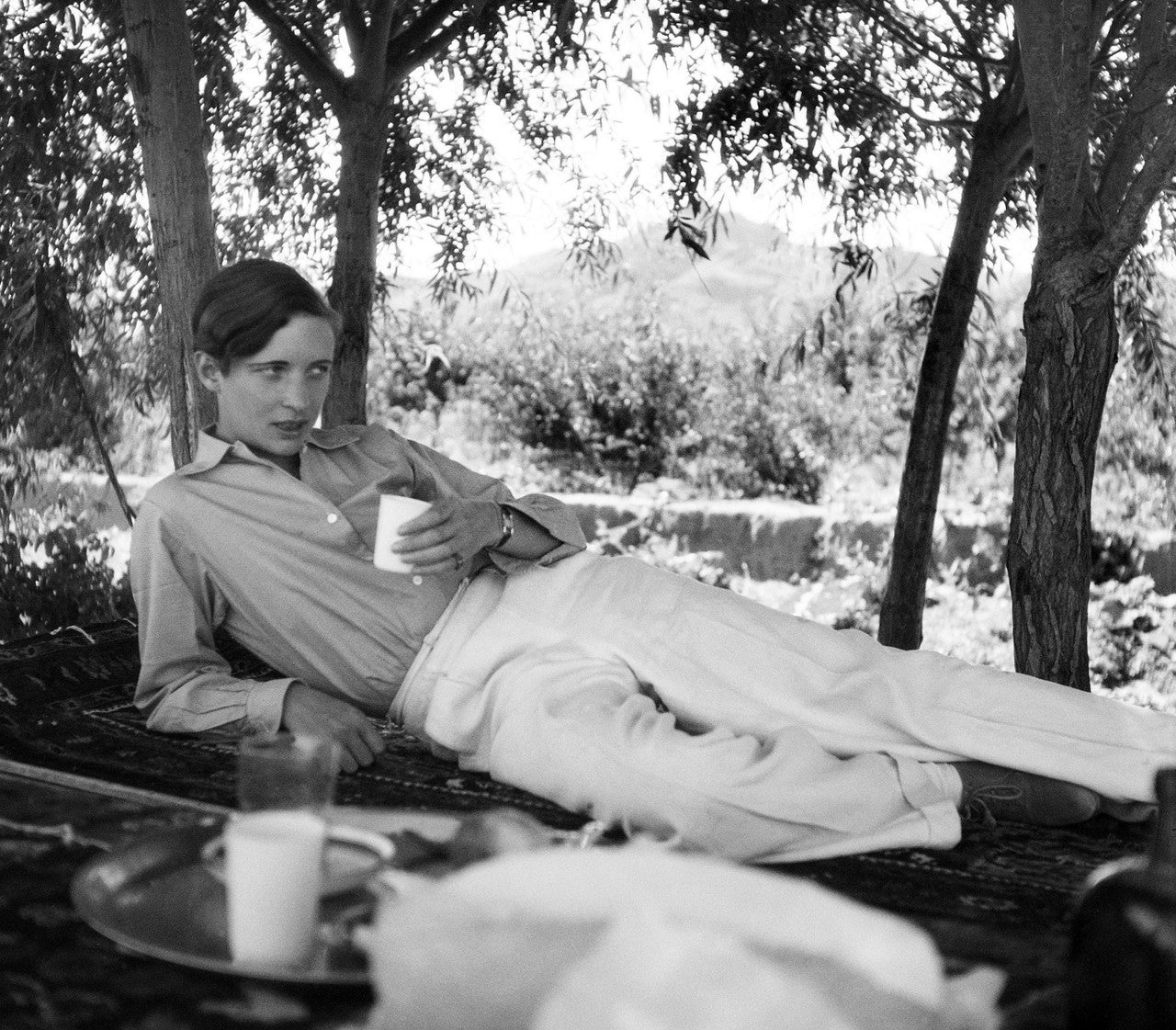

How important is the colour palette to what you do? You’ve not gone for the typical women’s outdoor purple and turquoise thing.
Allison: That was a huge point of contention for us when buying clothes for outdoors—we wanted to make sure that we felt like what we were building filled that void. The number one thing that we complained about was the colour palette, so we were really inspired by the outdoors.
We wanted to create a palette that every single piece of gear’s colour is found on any trail that you’re on. When we first created our colour palettes, it was based on the three most popular thru-hikes in the US—the Continental Divide Trail, the Pacific Crest Trail and the Appalachian Trail. It’s evolved from that, but really we’re just looking at things you can find on each of those trails, and what makes you feel grounded in nature.
Chelsea: We build monochromatically—that’s the first step we do, thinking about layers and tonality. Then once we’ve done that, we start to mix and match, because we don’t want to be creating clothing where you can’t build an entire wardrobe with. But doing things monochromatically makes things so easy.
Allison: It’s like the Green Lady here in New York—she’s not stressed, she’s just Green Lady.
And when you’re in the hills, it fits in too. It’s almost like camouflage. It’s not like, “Here come the hikers!”
Allison: Obviously there are safety reasons for bright colours—like if I was an alpinist, I’d want to wear bright colours, or during hunting season you need your blaze orange, but yeah—camouflage isn’t maybe the right word, but it’s more like armour or a uniform.
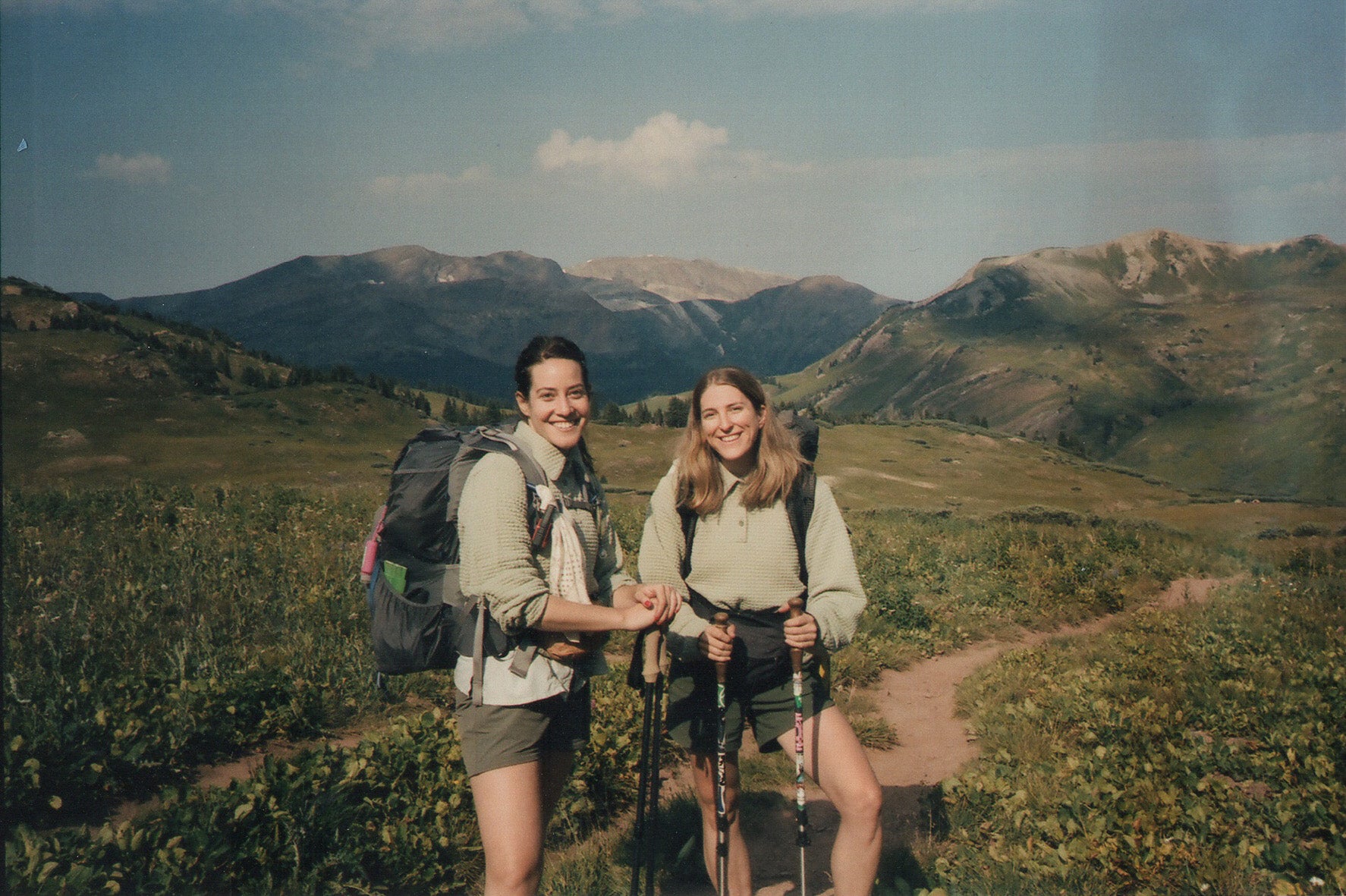

Where does your Hike Club sit with all this? Sometimes it can feel like these things are kind of ‘tacked on’ as like an afterthought, but I don’t get the impression that’s the case with you. Your regular organised hikes seem as important as the clothes.
Allison: The club launched at the same time. Basically, Chelsea and I didn’t have any friends who liked to hike, we just hiked with each other—so we kind of selfishly set up the club. Eventually we were able to find a community, and that’s been one of the most rewarding things about starting Hikerkind—seeing these relationships growing through the club.
I think there’s a lot of opportunities for brands to host an event as a one-off, but what makes ours different and what separates us is the consistency. We manage an entire season of clubs—and weather permitting, we want to be out on the trail as often as possible. And that consistency means that people can rely on Hikerkind to get them outside.
That makes sense. It’s kind of annoying when something cool happens, but it’s just a one-off thing. The momentum just fizzles out.
Chelsea: In year one, we were out of our mind. We hiked every other Saturday and every other Sunday—so four times a month. We did 24 transit-accessible hikes, then 12 car accessible hikes. It was insane—we were almost too reliable, so we scaled back a little so we could keep some sanity. The goal is to eventually get back to that pace, just not with us leading.
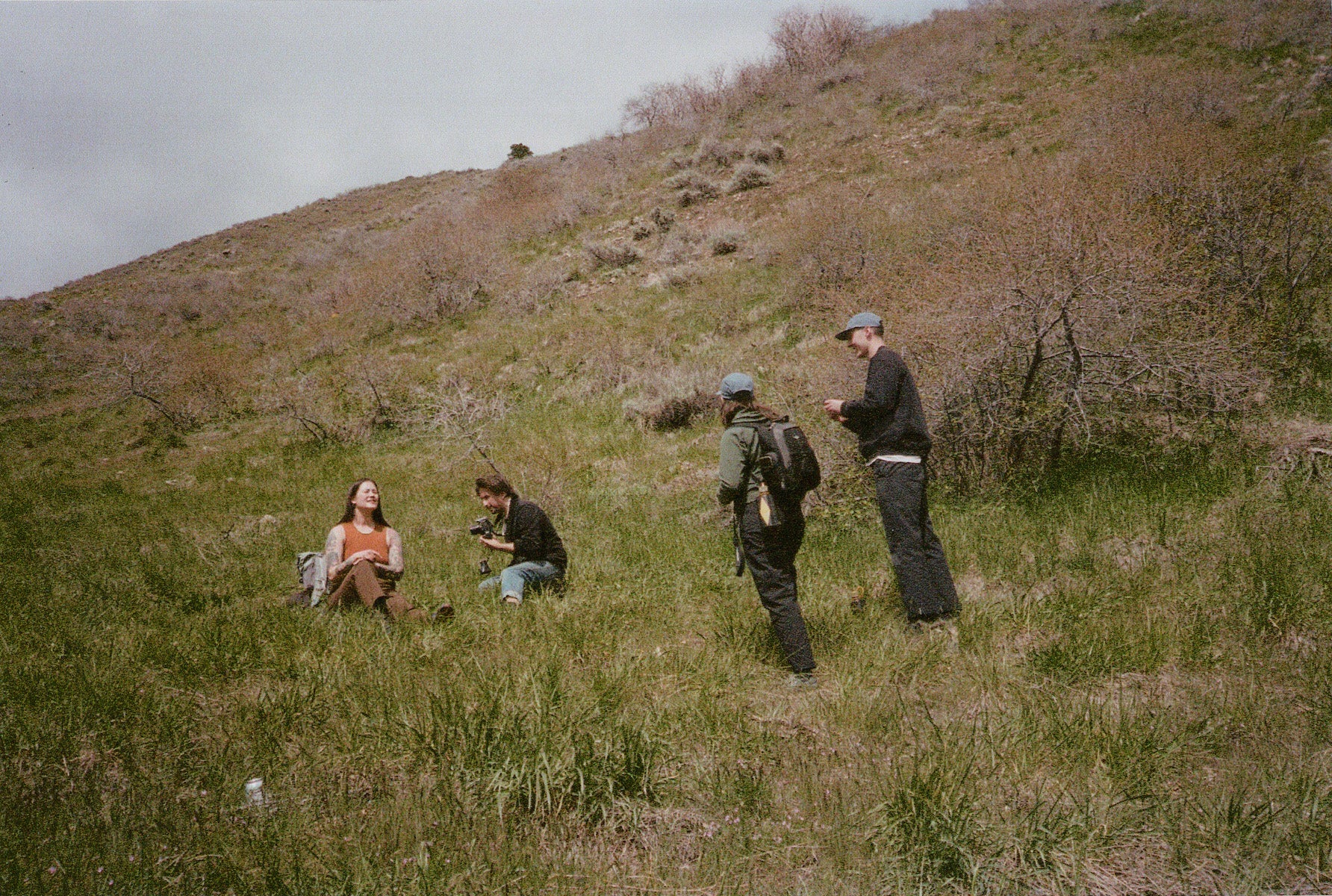

Where does the buzz come from with hiking for you? For some people it’s a numbers thing—like how fast they walk or how far—but what is it for you both?
Allison: I think hiking is the only time that I feel completely present. I feel really at home and myself, and time passes really quickly, but also really slowly. It’s this grounding experience where I can feel totally at ease and not pressured to be anything else. I think it’s more of a mental thing for me—it’s meditation and inner reflection. And then there’s the physical exertion, there’s nothing better than at the end of a hike you get in your tent and you’re like, “I did that.” I feel so physically tired and emotionally fulfilled, and I don’t get that from anything else.
Chelsea: I suffer from anxiety really hard, but when I did the Colorado Trail, for the first time in my life I felt completely present and my anxiety was gone. I wasn’t worried about something I’d done in the past, or anxious about the future—I was just in the moment. And I’d never felt that before. So since then I’ve kind of been an addict, chasing that release again.
And then I love to hike because of the people I meet. When you walk with someone for a couple of miles, or a couple of weeks, it’s a really unique experience to be with completely different people, whose worlds are completely different, yet for that moment in time, you have the same objective everyday. I think that’s really special. For me, it feels like the barrier is down—we can just share and talk and be open and silly, and there’s not a lot of competition, you’re all in the same spot.
I suppose most social stuff is kind of hierarchy based—whether it’s because of what job someone has or what house they live in or something—but when people are trekking across a trail, that stuff is kind of irrelevant. No one cares.
Chelsea: It’s a level playing field—you’re all vulnerable to the elements. No matter what job you have, you can’t outrun a lightning storm! There’s no competition in that way, so you feel this camaraderie, which is kind of unique.
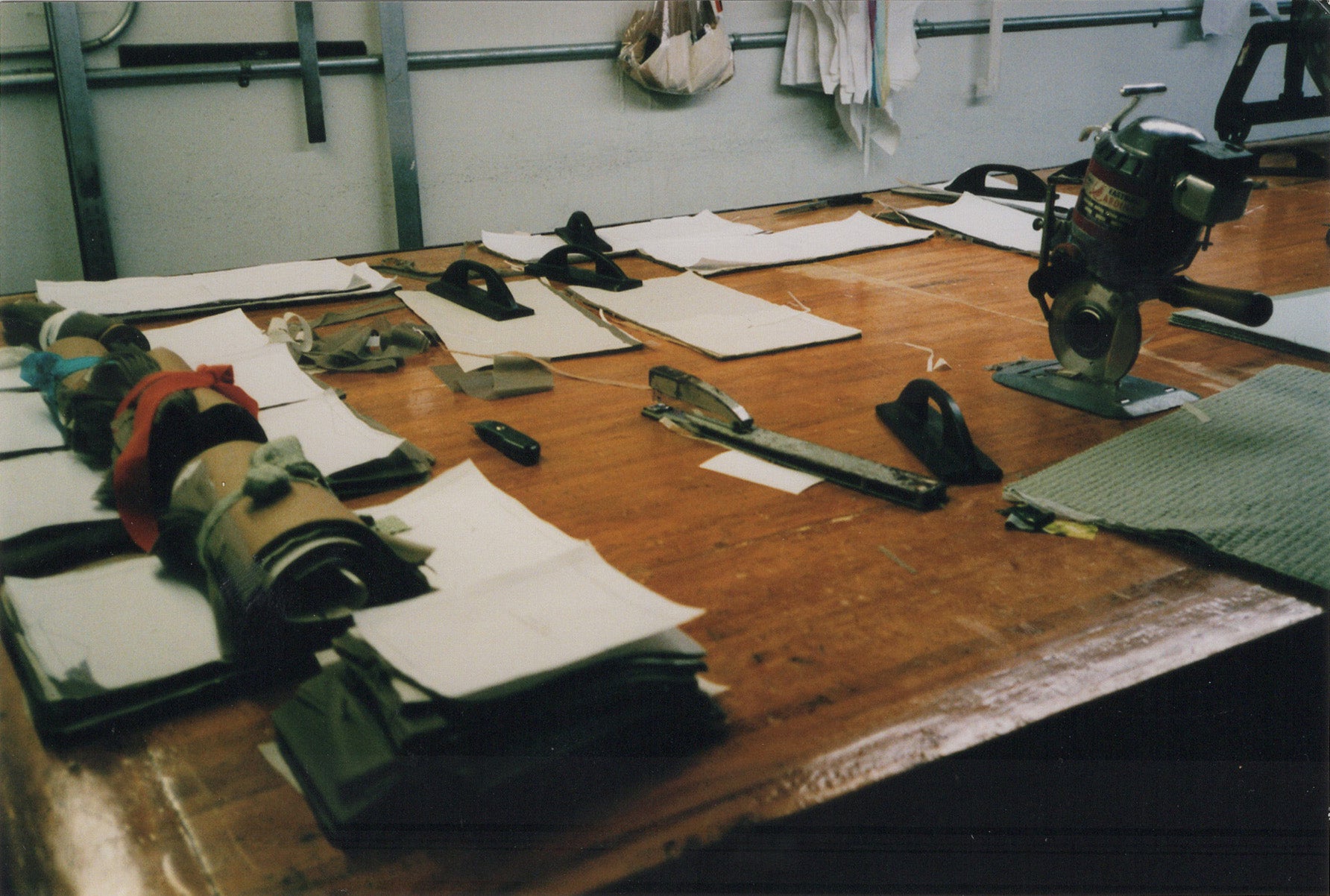

Sort of changing subject a bit here—your stuff is definitely performance clothing. It’s not just ‘cool campsite gear’—there’s some clever stuff going on there. Not coming from design, was it difficult to jump in at the deep end with this functional stuff?
Allison: It was definitely difficult to communicate at first. Sometimes the first impression of our gear is that it’s ‘lifestyle’. We were asked, “can I wear this hiking?” quite a lot, because it doesn’t look like hiking apparel. But then once we start talking about the technology of the features—whether that’s a gusset or a seam—they realise that all of these details are intentionally selected to enhance the performance.
Chelsea: The way we define a hike is travelling outdoors with an intention in mind. So in theory, I hiked to the office this morning. I was outside, I got rained on, I was going somewhere. So it’d be silly to not reframe the context in which we wear active apparel—because now I’m annoyed that I wore jeans today, because they got wet and I’m sitting here soaked—but if I’d worn our trousers, I’d be dry.
Some things start and suddenly out of the gate they make like 100 things, but the Hikerkind range is pretty concise. Was it a conscious decision to keep things manageable?
Chelsea: I’m a thru-hiker, so I just take what I can carry on my back—it’s one outfit. So when we started Hikerkind, that was where our brains were at. And we’re uniform girls—we know what we like to wear, and we wear a version of it everyday—that’s how we dress. So it’s a personal aesthetic and approach to dressing that Allison and I had, so when we started Hikerkind, it made sense to design that way.
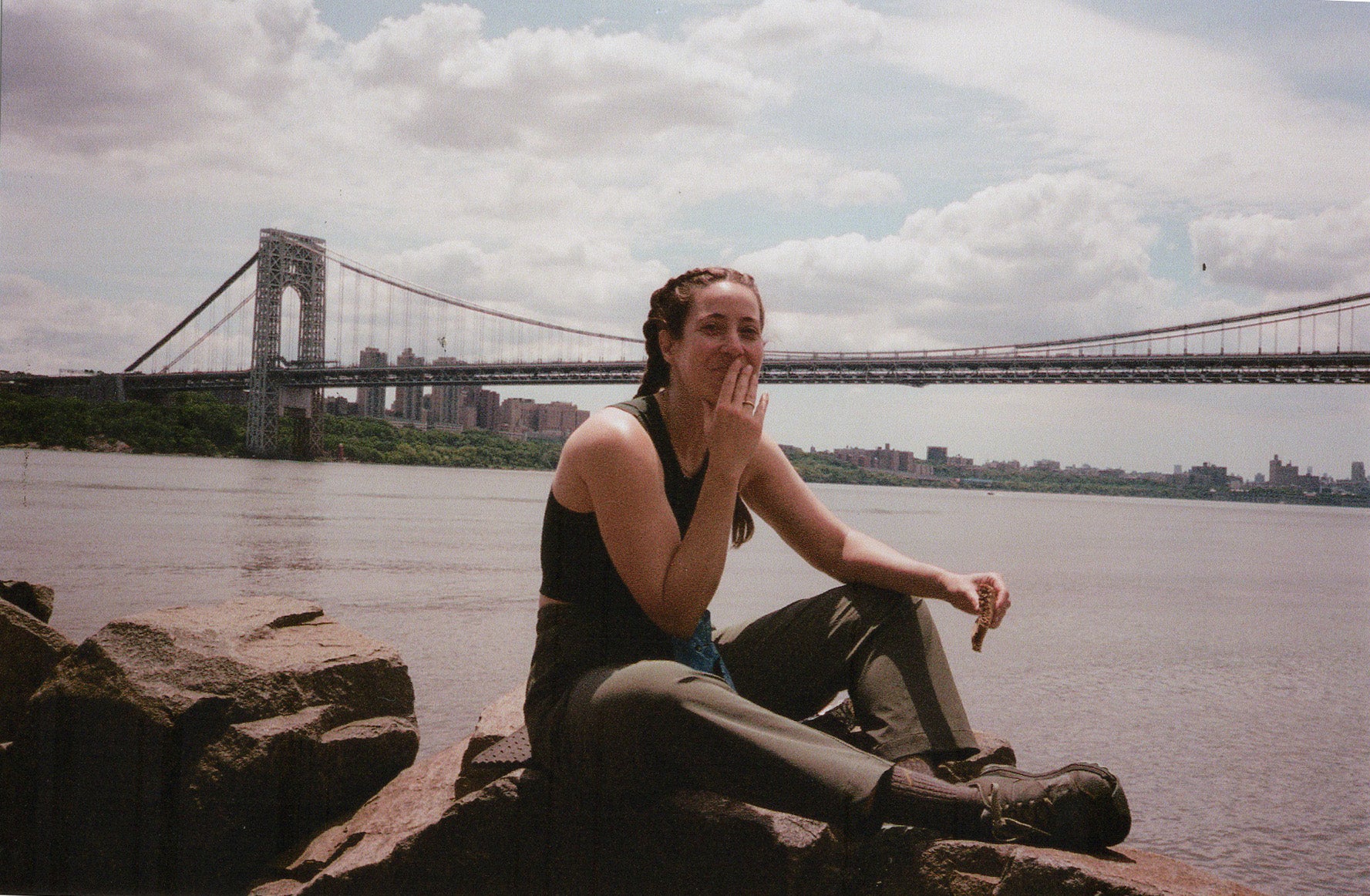
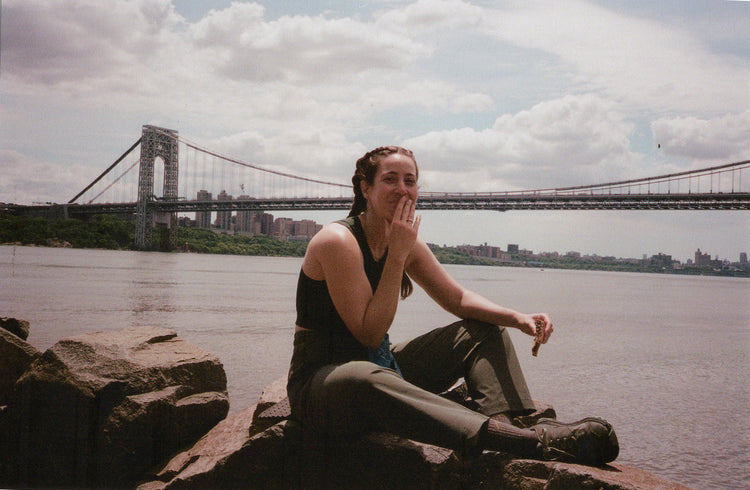
How does New York play a part in the brand? It’s not the first place that springs to mind when you think of hiking.
Chelsea: It’s exciting—there’s this really cool rumbling and awakening of other outdoor brands in the city which is helping us all rise up together and prove that there’s a huge outdoor community here, it’s just less obvious. We have an archive of so many hikes now that are all transit accessible from the city.
And I suppose living in a big city, you kind of need the steam release of a day out in the country every once in a while.
Chelsea: Totally. I also think there’s a lot of education, right? Part of why the Hike Club is so great is that we’re giving people tools that they might not necessarily be able to seek out on their own. Obviously you can go on the internet and search for the best transit-accessible hikes, but you’ll just get the same two that everyone goes on, and they’ll be so crowded that you might not have the best time. This way, it’s education that takes you to the next level—we want to share the knowledge so they can pass it onto their friends and plan their own hikes. This stuff isn’t really featured a lot in articles—
I think when I hiked the CT was when I learned about looking at maps and orienteering. There was a time when I got really sick and I needed to get off the trail and get some medicine, so me and my friend looked at a map and worked out how to hitchhike out—but that was a new thought process—before that I’d just go to Google, type in a friends’ address and follow the directions. I had never explored like that—so when I came back to New York and we started the club, we just pulled out a map and followed the train lines. That’s how we sourced a lot of the hikes—and I’d love to try and instil that more into the community, because it just opened up my world so much.
Allison: It gives you freedom.
And not everything is on the internet. It’s important to try and remember that sometimes.
Allison: The internet just has the heavy hitters that everyone knows.
Chelsea: I like that feeling of discovering a hike and then going and doing it. Maybe it was great, maybe it was shit—but even then I can come back and say, “Hey, I did this hike!” It’s interesting—it’s like, “Let me try it for myself.”







